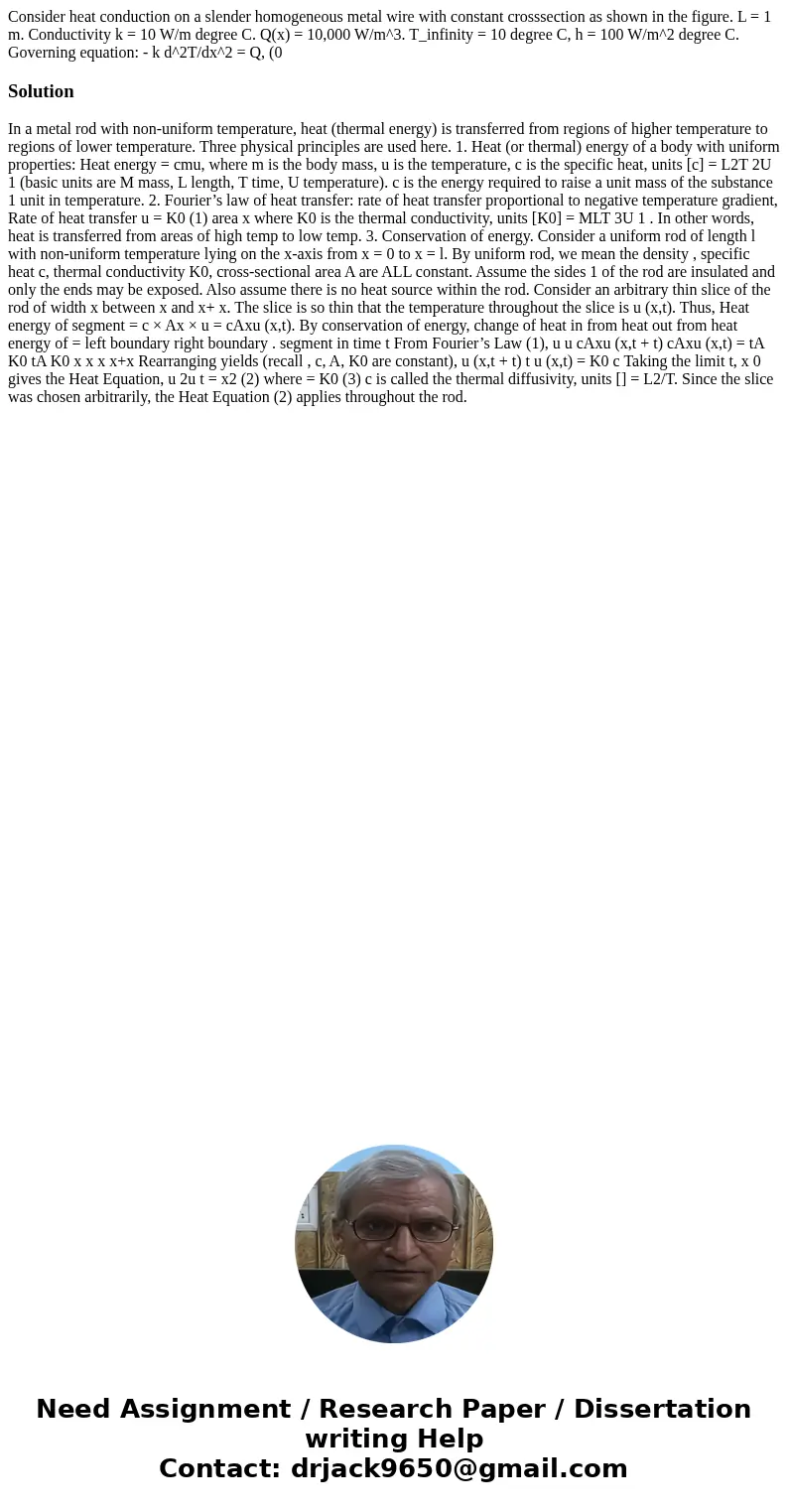Consider heat conduction on a slender homogeneous metal wire
Solution
In a metal rod with non-uniform temperature, heat (thermal energy) is transferred from regions of higher temperature to regions of lower temperature. Three physical principles are used here. 1. Heat (or thermal) energy of a body with uniform properties: Heat energy = cmu, where m is the body mass, u is the temperature, c is the specific heat, units [c] = L2T 2U 1 (basic units are M mass, L length, T time, U temperature). c is the energy required to raise a unit mass of the substance 1 unit in temperature. 2. Fourier’s law of heat transfer: rate of heat transfer proportional to negative temperature gradient, Rate of heat transfer u = K0 (1) area x where K0 is the thermal conductivity, units [K0] = MLT 3U 1 . In other words, heat is transferred from areas of high temp to low temp. 3. Conservation of energy. Consider a uniform rod of length l with non-uniform temperature lying on the x-axis from x = 0 to x = l. By uniform rod, we mean the density , specific heat c, thermal conductivity K0, cross-sectional area A are ALL constant. Assume the sides 1 of the rod are insulated and only the ends may be exposed. Also assume there is no heat source within the rod. Consider an arbitrary thin slice of the rod of width x between x and x+ x. The slice is so thin that the temperature throughout the slice is u (x,t). Thus, Heat energy of segment = c × Ax × u = cAxu (x,t). By conservation of energy, change of heat in from heat out from heat energy of = left boundary right boundary . segment in time t From Fourier’s Law (1), u u cAxu (x,t + t) cAxu (x,t) = tA K0 tA K0 x x x x+x Rearranging yields (recall , c, A, K0 are constant), u (x,t + t) t u (x,t) = K0 c Taking the limit t, x 0 gives the Heat Equation, u 2u t = x2 (2) where = K0 (3) c is called the thermal diffusivity, units [] = L2/T. Since the slice was chosen arbitrarily, the Heat Equation (2) applies throughout the rod.

 Homework Sourse
Homework Sourse